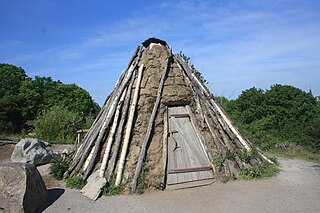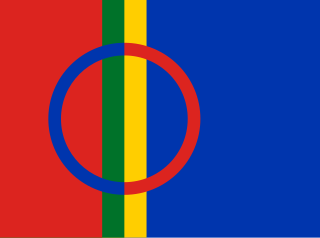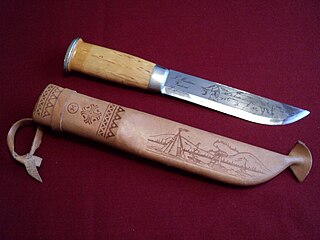 W
WÁjtte, the Swedish Mountain and Sami Museum, is a cultural and natural history museum in Jokkmokk in Lapland, Sweden.
 W
WCradleboards are traditional protective baby-carriers used by many indigenous cultures in North America and throughout northern Scandinavia amongst the Sámi. There are a variety of styles of cradleboard, reflecting the diverse artisan practices of indigenous cultures. Some indigenous communities in North America still use cradleboards.
 W
WSami cuisine is the cuisine of peoples from the Sápmi territory of the Sami people, which spans Norway, Sweden, Finland and Russia. Its traditional cuisine of each area has individual traits.
 W
WDuodji is a traditional Sami handicraft, dating back to a time when the Sami were far more isolated from the outside world than they are today. Duodji tools, clothing and accessories are functional and useful, and may also incorporate artistic elements. Sami duodji artists are able to bring function and art together in a delicate way so as to create beautiful works of art in their own right.
 W
WTorkel Tomasson was a Sámi newspaper editor and public figure who worked to promote Sámi identity and rights.
 W
WA goahti, goahte, gåhte, gåhtie or gåetie, ,, is a Sami hut or tent of three types of covering: fabric, peat moss or timber. The fabric-covered goahti looks very similar to a Sami lavvu, but often constructed slightly larger. In its tent version the goahti is also called a 'curved pole' lavvu, or a 'bread box' lavvu as the shape is more elongated while the lavvu is in a circular shape.
 W
WGollegiella is a pan-Nordic Sámi language award founded in 2004 by the ministers for Sámi affairs and the presidents of the Sámi Parliaments in Norway, Sweden, and Finland with the aim of promoting, developing and preserving the Sámi languages. The biennial award comes with a monetary prize that is currently 15,000 euros.
 W
WGuksi is a type of drinking cup traditionally duodji crafted by the Sami people of northern Scandinavia from carved birch burl.
 W
WLavvu is a temporary dwelling used by the Sami people of northern extremes of Northern Europe. It has a design similar to a Native American tipi but is less vertical and more stable in high winds. It enables the indigenous cultures of the treeless plains of northern Scandinavia and the high arctic of Eurasia to follow their reindeer herds. It is still used as a temporary shelter by the Sami, and increasingly by other people for camping. It should not be confused with the goahti, another type of Sami dwelling, or the Finnish laavu.
 W
WMárkomeannu is a Sami cultural and music festival held near the border of the municipalities of Skånland in Troms and Evenes in Nordland in northern Norway. The idea behind Márkomeannu is to celebrate the culture and traditions of the Sámi villages. Until 2006, the festival was organized by the youth association Stuornjárgga Sámenuorak, but starting in 2007 it has been organized by its own association, Márkomeannu Searvi.
 W
WThe Nordland boat, is a type of fishing boat that has been used for centuries in northern counties of Nordland, Troms and Finnmark of Norway and derives its name from Nordland county where it has a long history. It has dominated the Lofoten and Vesterålen islands fishing industry for centuries and is closely related to the old Viking longships.
 W
WNorwegianization was an official policy carried out by the Norwegian government directed at the Sámi and later the Kven people of northern Norway, in which the goal was to assimilate non-Norwegian-speaking native populations into an ethnically and culturally uniform Norwegian population.
 W
WNRK Sápmi is a unit of the Norwegian Broadcasting Corporation (NRK) that streams news and other programs in the Sami language for broadcast to the Sami people of Norway via radio, television, and internet. Regular radio news programs in Sami began in 1946, presented from Tromsø by the teacher Kathrine Johnsen (1917–2002), remembered today as "Sami Radio's Mother".
 W
WNutukas, finnesko, or simply Sámi boots are traditional Sámi winter footwear made of reindeer hide. Because they are soft, the nutukas will not freeze as solidly as thick boot leather, making them relatively easy to put on after overnight exposure to subzero temperatures. From 1890, they are regularly mentioned in accounts of polar travel.
 W
WThe Sámi people are an indigenous Finno-Ugric people inhabiting Sápmi, which today encompasses large northern parts of Norway, Sweden, Finland and the Kola Peninsula within the Murmansk Oblast of Russia. The Sámi have historically been known in English as Lapps or Laplanders, but these terms are regarded as offensive by some Sámi people, who prefer the area's name in their own languages, e.g. Northern Sami Sápmi. Sámi ancestral lands are in the Volga region, in present-day Russia, like other Uralic peoples. Their traditional languages are the Sámi languages, which are classified as a branch of the Uralic language family.
 W
WThe Sami knife, is a large knife traditionally used by the Sami people.
 W
WThe Skolt of the Year Award is an annual award founded in 2007. It is awarded to people, groups, organizations, and institutions individually or collectively in recognition of their outstanding linguistic and cultural contributions for the good of the Skolt community. In spite of its name, it is not a requirement that the recipient be a Skolt. The award is administered and voted on by the Skolt Sámi Language and Culture Association Saaʹmi Nueʹtt and the Skolt community council.
 W
WTråante 2017 was a celebration marking the centennial of the Sámi Assembly of 1917, which opened on 6 February 1917 in Trondheim, Norway. Trondheim is called "Tråante" in Southern Sámi.
 W
WThe Varanger Sami Museum is a museum for Sami culture and history in Varangerbotn in Nesseby in Troms og Finnmark.
 W
WThe song "When Spirits Are Calling My Name" was performed by Roger Pontare in the 2000 Eurovision Song Contest, in which Pontare represented Sweden.